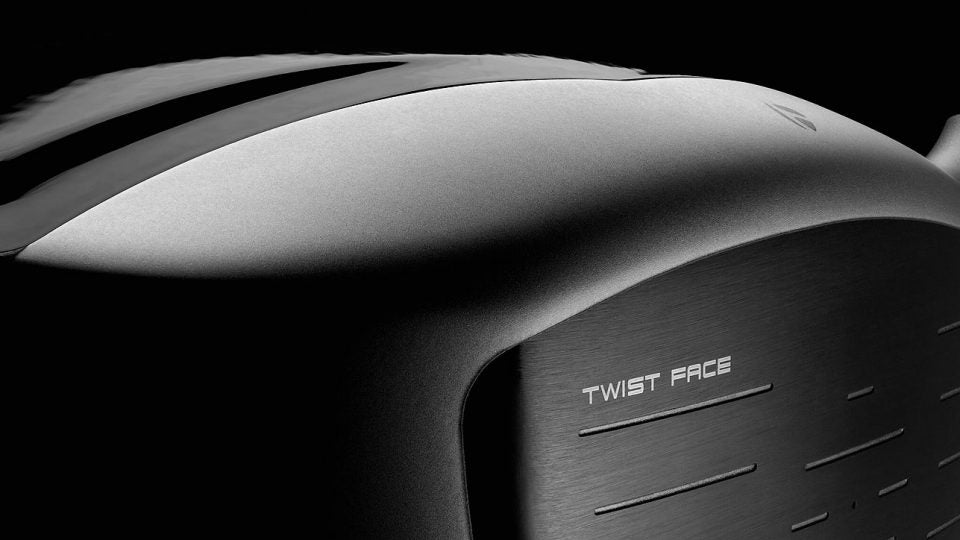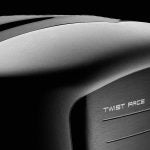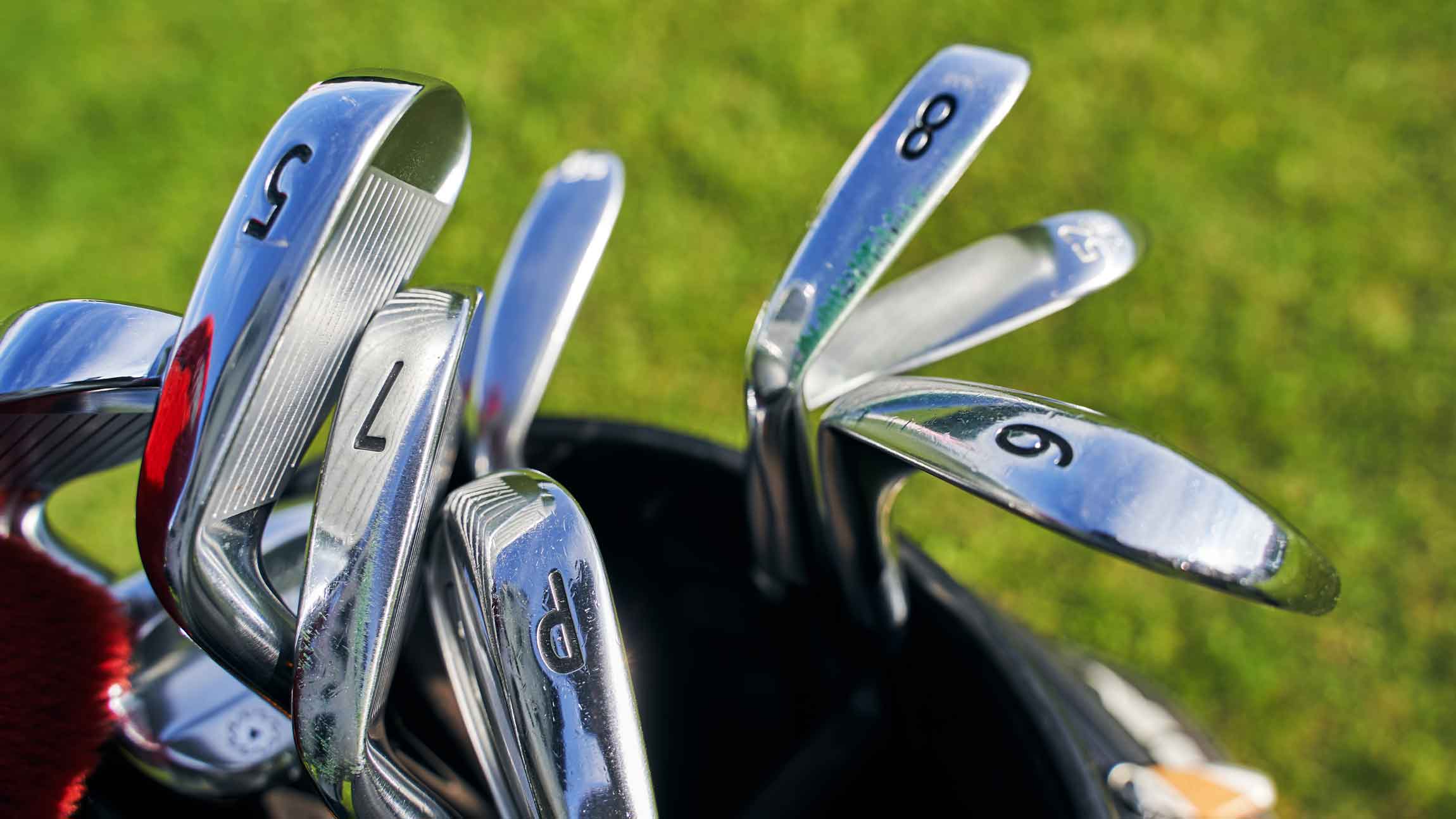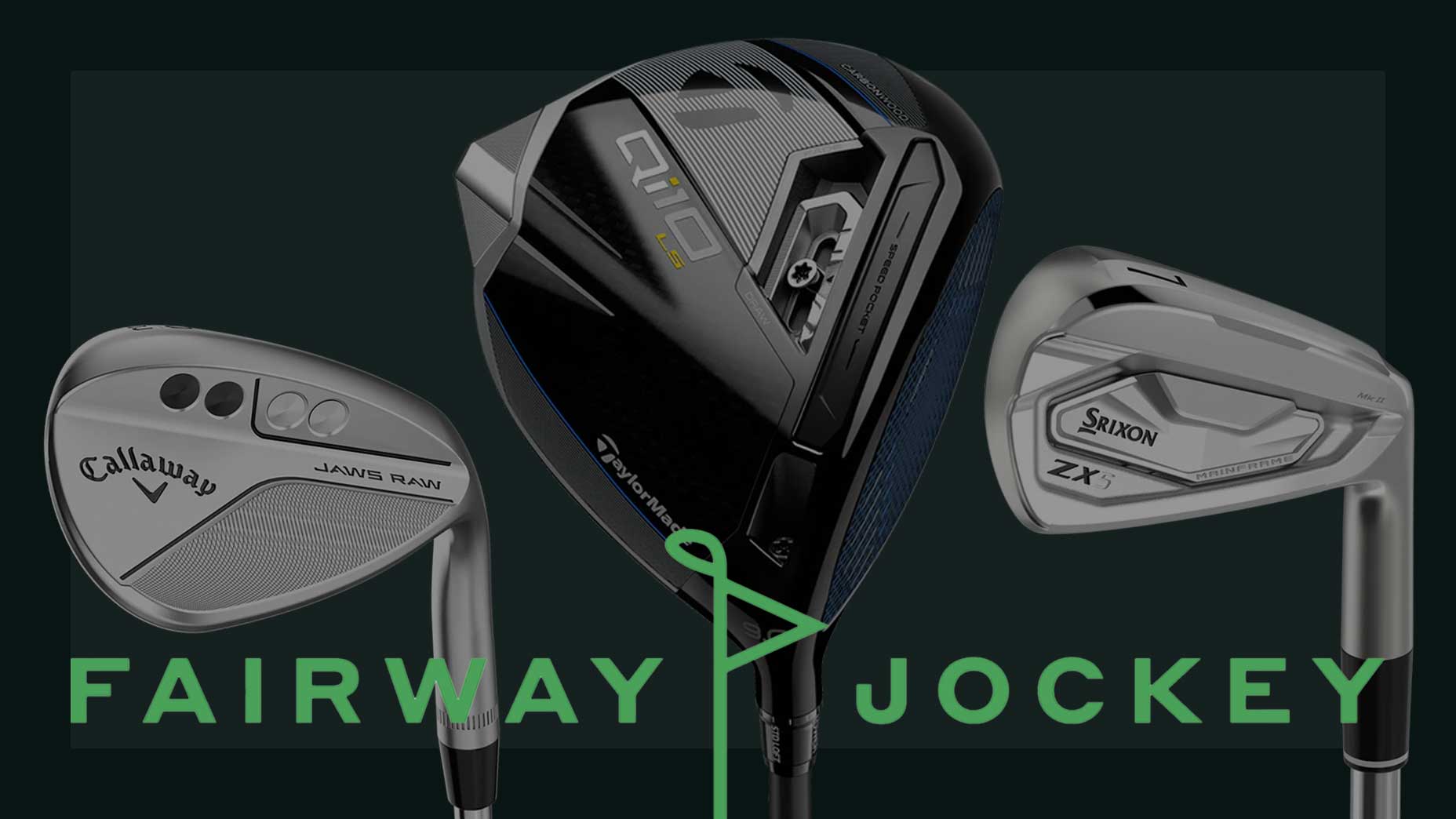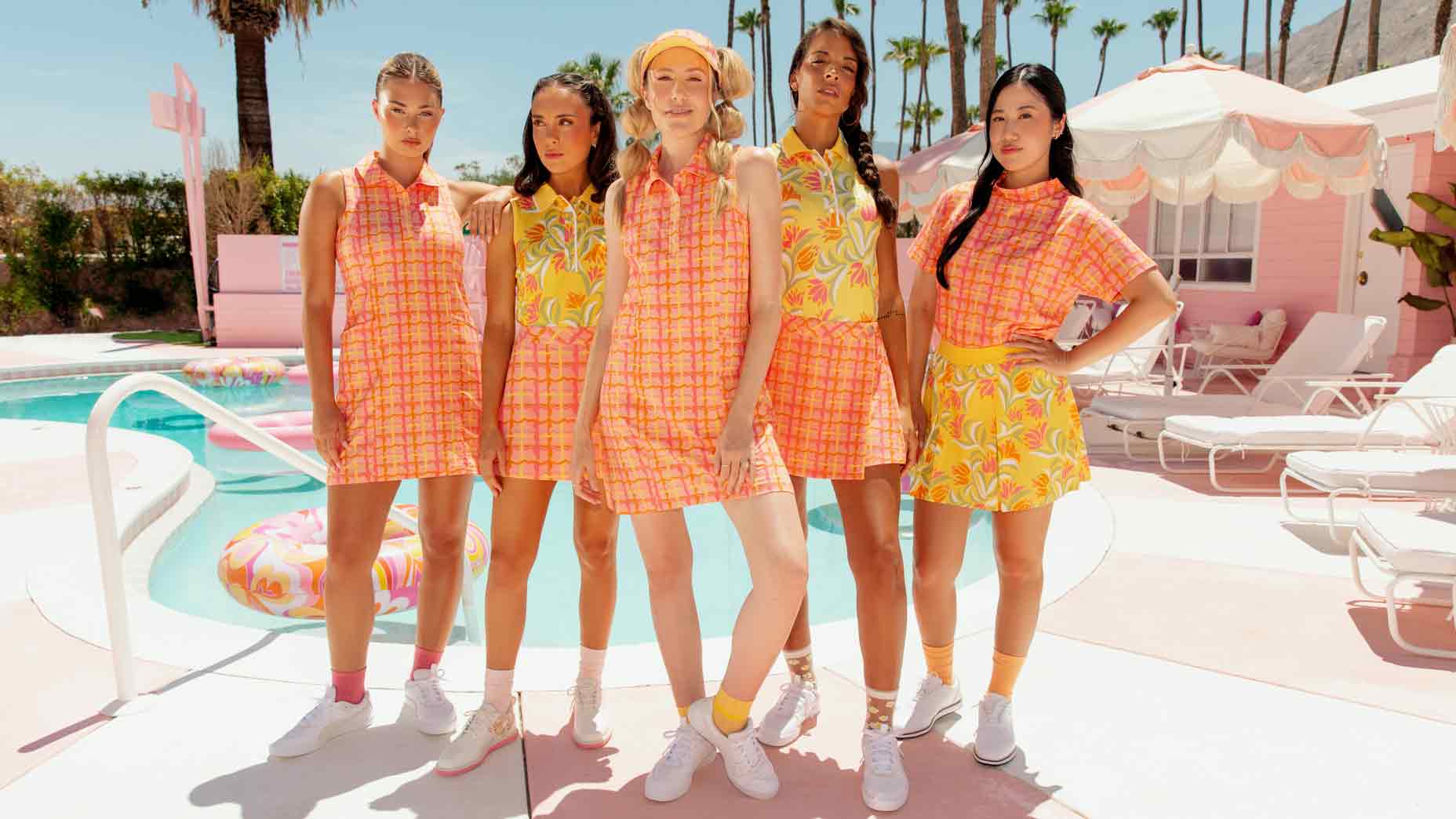Call it a new twist on an old idea.
The most unique and surprising feature of TaylorMade’s new M3 ($499) and M4 ($429) drivers is called Twist Face, a mind-bending design that takes a few moments to wrap your head around.
Driver faces have essentially always had the same “bulge and roll” face contour, with the goal of compensating for heel and toe shots by directing the ball back toward the fairway. But the folks in TaylorMade’s R&D department studied reams of driver data and found that this popular design functioned differently with humans compared to robots.
With the machines, which return the clubface to square at impact without manipulation, low heel and high toe hits indeed moved toward the center of the fairway. But with a living, breathing human, who naturally closes the clubface on high toe hits and opens it on low heel hits (the two most common misses), the ball tended to overcorrect and miss the fairway.
TaylorMade’s solution? Design a face that is twisted slightly open in the high toe area for more loft and slightly closed in the low heel area for less loft. The result, according to TaylorMade’s testing, is less hook on high toe hits, less slice on low heel hits, and more accuracy and distance overall.
M3 DRIVER

Twist Face isn’t the only innovation on the M3 driver. Replacing the T-Track weighting from the previous M1 is a new Y-Track design, which allow you to move two 11-gram weights from both front to back (for center of gravity, or CG, adjustment) and toward the heel and toe areas of the sole (for shot shape adjustment). The new system allows for more than twice as many CG configurations as the 2017 M1 (more than 1,000 total), which can be combined with the 12-position adjustable hosel to provide seemingly endless customizability. The design of the new Y-Track system also allows for a CG that is 36% deeper in the clubhead (with sole weights all the way back) than the past M1 driver, increasing the moment of inertia, or MOI, by 10%. CG movement is also increased with the Y-Track design by a whopping 83%.
A new Hammerhead Slot in the sole of the M3 increases the COR area across a bigger section of the clubface for more ballspeed and distance. The design includes three areas (heel, toe, and center) that combine to yield a 22% larger slot than the past M1. The new design also allows for a larger center slot, improving performance on low-face strikes.
The M3 will be available in 8.5°, 9.5°, 10.5°, and 12° lofts with a choice of Mitsubishi’s Tensei CK Red, Blue, or White shafts. A wide variety of other premium shafts are also available at no additional charge. For those who prefer a more compact clubhead, a 440 cc M3 will also be offered.
M4 DRIVER

The new M4 driver is $70 less expensive than the M3 but still offers most of the same technologies, except for the Y-Track adjustable weight system. As a replacement for the previous M2 driver, the M4 is aimed specifically at players looking for straight distance and forgiveness. Like the M3, the M4 is built with groundbreaking Twist Face technology for improved performance on low-heel and high-toe hits, and Hammerhead Slot technology for faster ballspeed and distance. Other features include a lighter clubface, an 86% increase in weight in the rear portion of the clubhead for increased stability, and Geocoustic engineering in the sole for improved sound at impact.
The M4 will be available in 8.5°, 9.5°, 10.5°, and 12° loft options with Fujikura Atmos Red shaft. An M4 D-Type ($429) with slight offset and 41g of weight in the heel will also be available for players who prefer a draw-bias option.
M3 FAIRWAYS AND HYBRIDS

M3 fairway woods ($299 each) and hybrids ($249) are also new for 2018, and both include significant improvements over previous M1 models. The M3 fairway (available in 15°, 17°, 19° lofts) features a five-layer composite crown that’s thinner than the M1, plus a better moveable weight system with 29 grams that can be manipulated for preferred shot shape. The improved track system also allows for the CG to be shifted 8% farther forward than the M1. Other features include a longer slot in the sole for a larger COR area and improved performance on hits below the center of the face, and an improved sole design for enhanced turf interaction.
Similar in shape and size to the 2017 M1 Rescue, the M3 incorporates more moveable weight than the M1 for enhanced shot-shaping. An adjustable hosel with 3° of movement further enhances fitting options. The M3 hybrids are available in 17°, 19°, 21°, and 24° models with Mitsubishi Tensei Blue shafts.
M4 FAIRWAYS AND HYBRIDS

M4 fairways ($249 each) feature speed pocket technology and thinner clubfaces than the previous M2 for a larger COR area and better ballspeed and distance on mishits, as well as Geocoustic technology for improved sound. A newly designed split-weight mass pad also adds forgiveness and distance on off-center hits.
The M4 fairway will be available in 15°, 16.5°, 18°, 21°, and 24° loft options with Fujikura Atmos Red shaft. A more compact M4 Tour fairway will also be available for players who desire more shot-shaping workability and lower launch.
Also coming are M4 Rescues ($219 each), which feature a cut-through speed pocket in the sole for improved performance on low strikes and a split-weight mass pad similar to the fairway wood for added performance on off-center hits. The M4 Rescue will be available in 19°, 22°, 25°, and 28° lofts with Fujikura Atmos Red shaft.
M3 IRONS

Similar to the new metalwood line, new M3 and M4 irons replace the previous M1 and M2 models. The M3 ($999 steel, $1,199 graphite) is aimed at players looking for distance with enhanced workability in a more traditional size. The most notable new technology in both new irons is called RIBCOR, an internal support system that works with the proven face slot design to more efficiently transfer energy to the ball at impact. RIBCOR works by stiffening the outside of the clubhead, which allows the space inside the face slots to flex more freely, particularly on off-center hits. The result is faster ballspeed across the entire face for longer carry and distance. RIBCOR also dampens vibration at impact for improved feel and sound.
Other features of the new M3 irons include a thinner topline, 15 grams of Tungsten in the sole for a lower CG and improved stability, a speed pocket in the sole for better performance on low face hits, and a sweet spot that’s slightly closer to the toe, where most players make contact. Three-iron through SW will be available with a choice of True Temper XP100 steel shafts or Mitsubishi Tensei graphite shafts.
M4 IRONS

The new M4 irons ($899 steel, $999 graphite) are designed to provide maximum distance and forgiveness for players who put a premium on shots that go long and straight. Like the M3 irons, the M4s are built with RIBCOR technology, face slots and speed pockets, plus the slightly off-center sweet spot. Other features include an improved iteration of the fluted hosel design, an extremely thin topline and an MOI that’s approximately 24% higher than the previous M2 iron.
M4 irons will be available in 4-LW with a choice of KBS MAX steel shafts and Fujikura Atmos graphite shafts.
All new M3 and M4 woods and irons will be available at retail on Feb. 16. Pre-orders for the M3 driver will begin Feb. 1.


